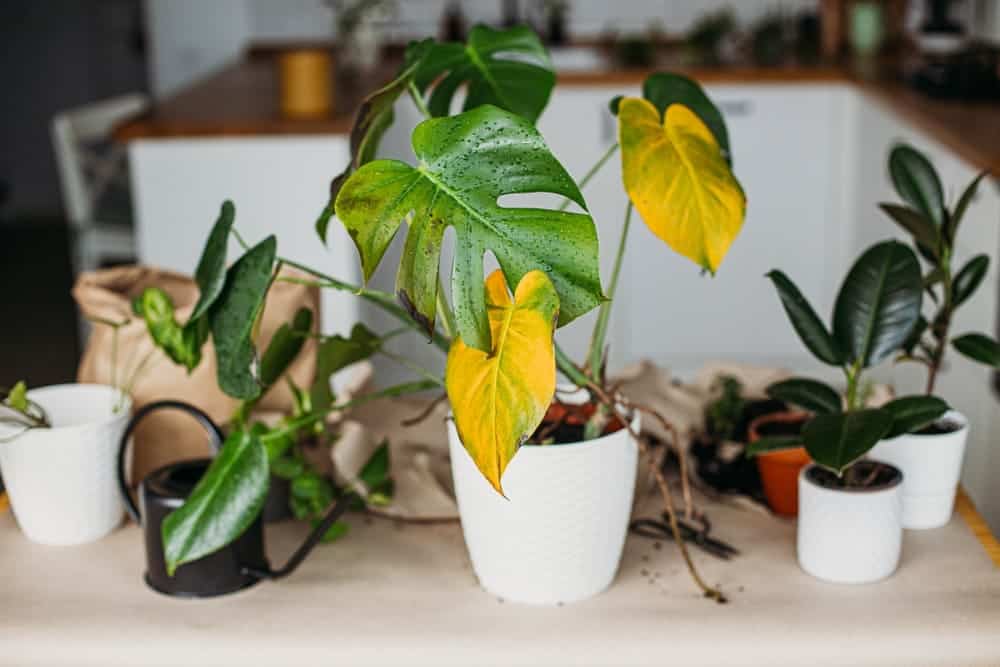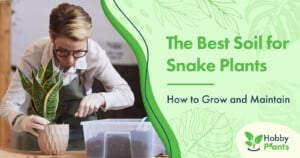Most houseplants found in homes, malls, and offices are native to subtropical or tropical countries where temperatures are consistently warmer than some of the temperatures in our homes.
In order for your houseplants to not only survive but grow, be healthy, you need to ensure the place where your plant will be that it is at the right temperature.
Temperatures and Humidity
The best temperature for the house and indoor plants should be between 60-75 degrees Fahrenheit. Some may need a bit more heat or less heat but this is the range that most will grow safely in.
- Too low: this will present a bigger problem than if the temperature is too high. If the temperature is too low it can damage the growth of the plant significantly and could cause them to die. They could die if they are given too much water with temperatures that are too cold. For tender plants, the lowest temperature should be no lower than 60 degrees Fahrenheit, half-hardy plants, 50-55 degrees Fahrenheit, and hardy plants 45 degrees Fahrenheit.
If the temperatures get above the recommended level you can help to improve the humidity by spray misting the leaves. You can also place your plant on a tray of pebbles that are almost completely covered in water and as the water evaporates, it will help build the humidity in the room.
As most know, many of the houseplants today come from the tropics, and then they are raised commercially in greenhouses. Plants will generally not do well when temperatures are above 75 degrees Fahrenheit. The reason is that the amount of moisture in the air and the amount of light that falls on their leaves are far less than if it was being raised in a greenhouse or outdoors in the Tropics. The need for heat is a lot less so that is why temperatures need to stay under 75 degrees Fahrenheit.
Some of the foliage and flowering houseplants need the room to be on a cool side with the maximum temperature of 60 degrees Fahrenheit in the winter.

Potential Problems
Quick changes in temperature and prolonged cold spell
Most indoor houseplants can tolerate temperatures below and above what they prefer but the real problem that can cause growth issues is a prolonged period of cold or a sudden drop in temperature. They can tolerate 5-10 degrees Fahrenheit temperate changes but anything else it could cause problems
Window sills
Windows sills do make a great place to sit your houseplants during the summer because of the warmth and light but in the winter, there could be drafts that can cause problems. You can either draft proof the window or sit them on something a few inches back from the window.
Drafts
The room temperature can differ depending on what area of the room is measured. It also depends on how the room is heated. Putting plants near windows or doors is an area where there could be potential drafts. You will need to move the plant if you notice it is not doing well where you have it.
Too Hot
Winter is the time when plants are dormant and getting re-energized for their growing period in the spring and summer. You want to make sure that your plants are kept warm but not as warm as they would be during the spring and summer. If the temperature in the area where they are is too hot, it could mess up the houseplants cycle and cause them to think it is already spring and time to start its growing cycle. One thing to remember is that central heating can dry out the air so this will decrease the humidity. You also need to be sure where you are putting your houseplant because if it gets too much light and generated heat it could be too much for the plant as you can see below. The plant may also need more water than normal for the dormant period. If there is active growth during the winter, the plant could become spindly.
Learn more: How Often to Water Fiddle Leaf Fig?
Signs the Temperature is not Right
- Flowers dying too quickly: The temperature could be too warm or they could be too cold and gotten frostbite. If you are keeping your plant near a window, move it to a warmer spot. If it is because it is too warm, you may also have to move it to where it is a bit cooler or mist the leaves.
- Lower leaves falling, edges turning brown, wilting leaves: The temperature is too warm
- Leaves turning yellow and falling off: When this happens, there could have been a dramatic temperature drop of 15 degrees Fahrenheit or a cold draft. You should move the plant around until you find the right spot where it is thriving.
- Leaf curling following by leaf fall and browning: The temperature is too cold.
- Spindly growth in good light in early spring or winter: This due to the temperatures being too warm.
Similar post: Should You Cut off Dead Leaves From an Indoor Plant?
Conclusion
Getting the temperature right is hard but even harder when you have several different types of plants that all need different temperatures. A good rule to follow is during the spring and summer when the plant is in the growing stage, it needs to be kept warm but when it is dormant in the winter it will need a little bit cooler temperature. There are no houseplants that like very cold conditions and they can die if they are exposed to even a little frost. Check the plants you have to see what their ideal temperature would be and try to keep the area where they are at the right temperature.
It will take time to know the best temperature for your houseplants and there is a possibility you may lose some before you get it all figured out but in time you will and your houseplants will thrive and be healthy. Take care of your plants and they will brighten up your home, purify the air, for years to come.
Also read:
Victoria is the owner and main author of hobby plants. She loves spending her free time in her garden planting and taking care of her plants. Victoria hopes you enjoy the content here!
![The Best Stylish Grow Lights for Indoor Plants [REVIEWED] The Best Stylish Grow Lights for Indoor Plants [REVIEWED]](https://www.hobbyplants.com/wp-content/uploads/2022/07/stylish-grow-lights-for-indoor-plants-300x158.jpg)
![Can Snake Plants Live Outside? [COMPLETE CARE GUIDE] Can Snake Plants Live Outside? [COMPLETE CARE GUIDE]](https://www.hobbyplants.com/wp-content/uploads/2022/08/can-snake-plants-live-outside-300x158.jpg)



![How To Bottom Water Plants [MOST EFFECTIVE TECHNIQUES] How To Bottom Water Plants [MOST EFFECTIVE TECHNIQUES]](https://www.hobbyplants.com/wp-content/uploads/2022/07/how-to-bottom-water-plants-300x158.jpg)
![What Are The Types Of Dracaena Plants [Answered] What Are The Types Of Dracaena Plants [Answered]](https://www.hobbyplants.com/wp-content/uploads/2022/07/types-of-dracaena-plants-300x158.jpg)


![The Types of Prayer Plants: [Varieties Explained] The Types of Prayer Plants: [Varieties Explained]](https://www.hobbyplants.com/wp-content/uploads/2022/09/types-of-prayer-plants-300x158.jpg)
![The Types of Ice Plants: [Varieties Explained] The Types of Ice Plants: [Varieties Explained]](https://www.hobbyplants.com/wp-content/uploads/2022/09/types-of-ice-plant-300x158.jpg)
![What Is Bright Indirect Light For Plants? [ANSWERED] What Is Bright Indirect Light For Plants? [ANSWERED]](https://www.hobbyplants.com/wp-content/uploads/2022/08/what-is-bright-indirect-light-300x158.jpg)